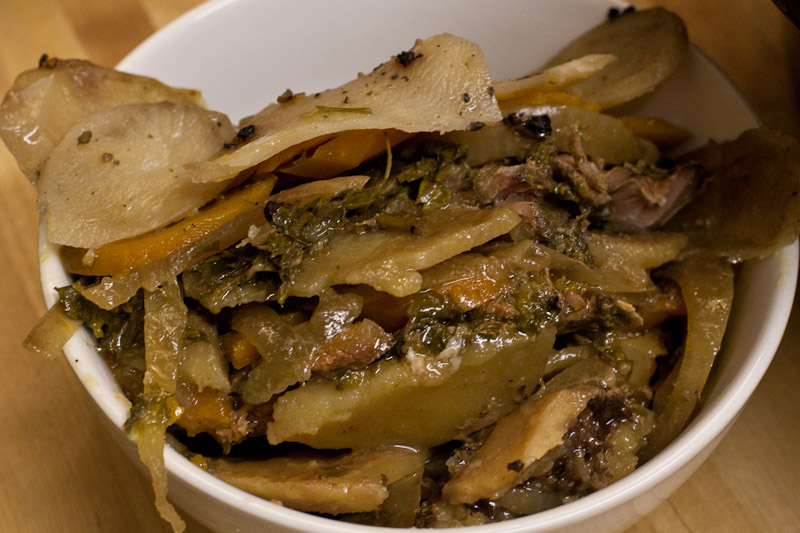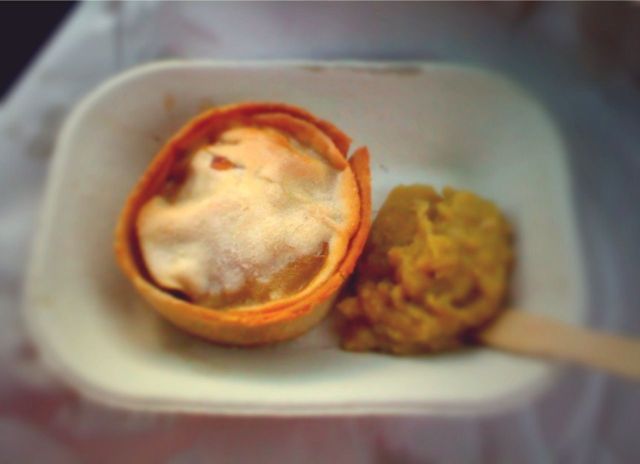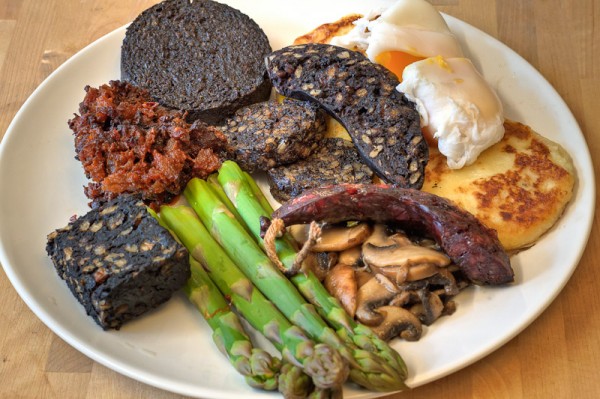Pot luck with Lancashire Hotpot
Autumn’s definitely the time to turn up the heat, run down the blinds, and take solace in slow-cooked, slow-release, one-pot wonders. As I felt the first fingers of frost tapping on the windows in October I decided it was definitely time to blow the dust off my slow-cooker, which doesn’t get much love during the summer months.
One morning when I was at Stansfield’s the butcher, I asked about the availability of mutton. As chance would have it, some was due in later that day: Paul had serendipitously thought it was about that time for the older, more flavoursome meat to make a reappearance as it was drawing in a bit out there. Now, I love a good bit of mutton. Snobs may turn their noses up at an auld bit of sheep over a young lamb, but for certain dishes I’m a firm believer that the grain and richness of an older beast is much more appropriate. The dish I had in mind was a good old Lancashire Hotpot, a perfect home for an older sheep to end its day in…
It’s hard to find a definitive recipe for Lancashire Hotpot: such a family favourite means there are a thousand variations and versions, particular to a certain place. I’ve had delicately-balanced miniature portions in restaurants and great splodges of home-served goodness, and the unifying elements are normally lamb/mutton, carrots and spuds. After that it seems to be open season for a whole range of additional elements.
A few years ago I saw the Hairy Bikers making hotpot in Bury Market and they suggested adding a layer of the local black budding to give a layer of unctuous goodness at the bottom of the pot.I tried this the first time I had a go at making this dish, and never looked back. Black pudding makes a great gravy base at the best of times (as used here) and it adds an extra touch of the local speciality to a hotpot.
I started by slicing a load of spuds and carrots, then laying down a layer of thinly-sliced spuds on top of a well-greased pot. Season well, and add the next layer… in this case a sliced link of Ireland’s black pud. Then another layer of spuds (I love that dauphinoise-esque experience of lots of layers of well-buttered spuds) and pieces of mutton, cut fairly small and mixed with some fresh parsley. Then that was covered by sliced carrots, then potatoes, then mutton and… well, you get the picture. Hardly scientific in terms of quantities, but delightfully fun to arrange.
Last time I made this I added a proper stock, but reckoned in the slow cooker I’d be able to rely on the liquid in the veg, so just poured some water down the edges, mixed with Worcester sauce. Some older recipes suggest adding oysters to the mix: I added a splash or three of Anchovy Sauce for a similar umami kick. The whole thing was then finished off with slivers of butter on the top, before the lid went on for 8 hours of overnight slow-cooking.
Proper Lancashire friends have told me the origin of the dish is that was cooked slowly all day in oven, ready for the working folk to get home. I’m a fan of all things cooked for aeons so the slow-cooker (crockpot) seemed a likely option. What I’d not bet on was how appealing it is to wake up to the heavenly smell of a hotpot: It took an almost superhuman effort not to wolf down a portion for breakfast, and instead save it for my intended evening meal.
Fast forward through the day and I served this up to a friend for an informal evening meal. Always good to see us attacking the pot for seconds with such gusto: hopefully this proves the worth of such a classic, simple, traditional British dish. Preferably the slower cooked, the better!





















Leave a Reply
Want to join the discussion?Feel free to contribute!